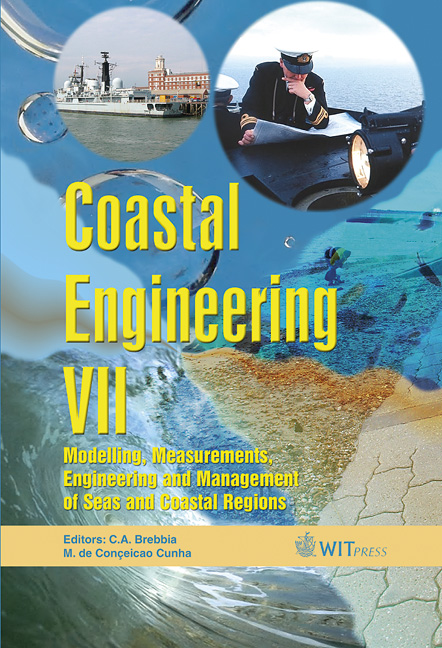Seismic Risk Assessment Of Corinth Canal, Greece
Price
Free (open access)
Transaction
Volume
78
Pages
10
Published
2005
Size
1,658 kb
Paper DOI
10.2495/CE050291
Copyright
WIT Press
Author(s)
F. Gkika, G.-A. Tselentis & L. Danciu
Abstract
Corinth Canal is one of the most important navigation projects undertaken in Greece and plays a significant role in marine transportation connecting the Ionian Sea to the West through the Corinth Gulf and Saronikos Gulf to the Aegian Sea to the East. It has a total length of 6.3km and due to its steep slopes possesses serious slope instability problems. This work deals with the effect that local seismicity has upon Corinth Canal by assessing the corresponding site specific seismic risk. Special parameters such as the expected peak ground acceleration and the Arias intensity which are closely related to local slope instabilities have been determined. All well known nearby seismic faults have been taken into consideration and the most dangerous seismic sources which can cause serious damage to the canal have been defined. Keywords: seismic risk, Arias intensity, Corinth Canal, Greece. 1 Introduction Corinth Canal is 6.3 km long and geographically is located in the eastern border of the Corinth Gulf in the center of a neotectonic depression. It is a narrow piece of land that connects Peloponnesus with the mainland of Greece and the Gulf of Corinth with the Saronic Gulf, Figure 1. Corinth Canal is one of the most important projects that were made in Greece in the 19 th century for navigation, railroad and highway connection. The cutting of the canal begun in 1882 and it was completed in 1893. Slopes in the canal exhibit inclination 75 o and maximum height ~ 79m above the sea level. The water depth is ~8m and the width of the canal is ~24.5m on the sea surface and ~21m on the sea bottom.
Keywords
seismic risk, Arias intensity, Corinth Canal, Greece





